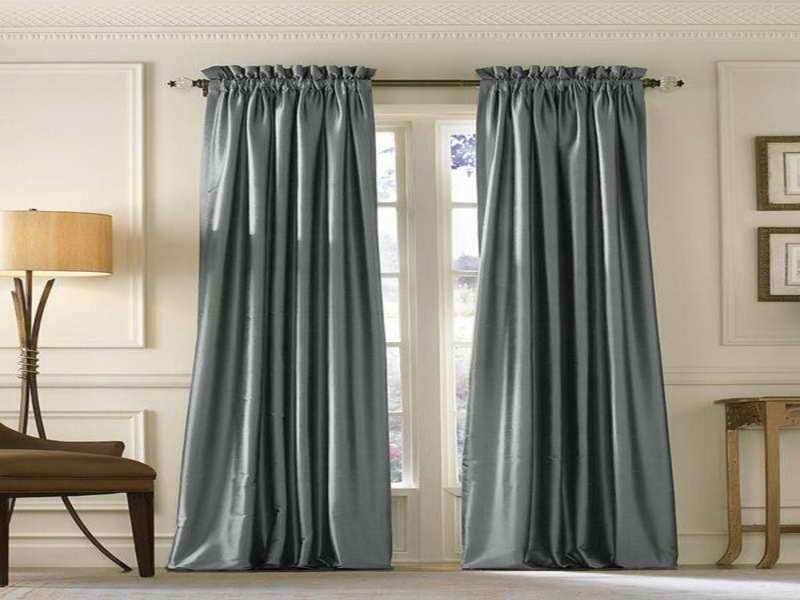The Environmental Impact of Silk Curtains: Sustainable Options for Eco-Conscious Consumers

Silk curtains are renowned for their luxurious texture and elegant appearance, making them a popular choice for interior decoration. However, the production of traditional silk can have significant environmental consequences. In this article, we will explore the environmental impact of silk curtains and discuss sustainable options for eco-conscious consumers.
Introduction to Silk Curtains
Silk curtains are made from the fine threads spun by silkworms to create their cocoons. These threads are then woven into fabric, resulting in curtains that are prized for their smooth texture, natural sheen, and ability to drape beautifully. While silk curtains add a touch of sophistication to any room, it’s essential to consider the environmental implications of their production.
Environmental Impact of Silk Production
Deforestation
Traditional silk production often involves the clearance of forests to make way for mulberry trees, which are the primary food source for silkworms. Deforestation can lead to habitat loss for wildlife and contribute to climate change by reducing the number of trees that absorb carbon dioxide from the atmosphere.
Water Consumption
Silk production requires large quantities of water, both for irrigating mulberry trees and for processing silk fibers. In regions where water is scarce, this high level of water consumption can strain local water resources and lead to environmental degradation.
Chemical Use
The processing of silk fibers involves the use of various chemicals, including dyes, bleaches, and degumming agents. These chemicals can be harmful to the environment if not properly managed, leading to pollution of waterways and soil contamination.
Sustainable Silk Production Methods

Recognizing the environmental impact of traditional silk production, many producers are adopting more sustainable methods to minimize harm to the planet.
Organic Silk Farming
Organic silk farming avoids the use of synthetic pesticides and fertilizers, opting instead for natural alternatives that are less harmful to the environment. By reducing chemical inputs, organic silk farming helps to protect soil health, water quality, and biodiversity.
Peace Silk Production
Peace silk, also known as ahimsa silk, is produced without harming the silkworms. In traditional silk production, the silkworms are boiled alive to extract the silk threads from their cocoons. In contrast, peace silk allows the silkworms to complete their life cycle and emerge from their cocoons as moths before the silk is harvested. This cruelty-free method of silk production aligns with ethical and sustainable principles.
Benefits of Sustainable Silk Curtains

Reduced Environmental Footprint
Opting for sustainable silk curtains can significantly reduce the environmental footprint associated with their production. By supporting producers who prioritize eco-friendly practices, consumers can minimize deforestation, water consumption, and chemical pollution.
Support for Ethical Practices
Sustainable silk production methods often prioritize ethical treatment of both animals and workers. By choosing peace silk or organic silk curtains, consumers can support producers who value animal welfare, fair labor practices, and social responsibility.
High-Quality Product
In addition to their environmental and ethical benefits, sustainable silk curtains offer the same luxurious qualities as traditional silk. With their smooth texture, natural sheen, and excellent drape, these curtains provide an elegant finishing touch to any interior space.
Tips for Eco-Conscious Consumers
Researching Sustainable Brands
When shopping for silk curtains, eco-conscious consumers should research brands that prioritize sustainability and transparency in their production methods. Look for certifications such as Global Organic Textile Standard (GOTS) or Fair Trade to ensure ethical and environmentally friendly practices.
Checking Certifications
Certifications can provide assurance that silk curtains are produced using sustainable methods and materials. Look for labels indicating organic or peace silk, as well as certifications from reputable organizations that verify compliance with environmental and ethical standards.
Care and Maintenance
Proper care and maintenance can prolong the lifespan of silk curtains, reducing the need for frequent replacements and minimizing waste. Follow manufacturer’s instructions for cleaning and storage to ensure that your curtains remain in excellent condition for years to come.
Conclusion
As consumers become increasingly aware of the environmental impact of their purchasing decisions, sustainable options for silk curtains are gaining popularity. By choosing curtains made from organic or peace silk, eco-conscious consumers can enjoy the luxurious qualities of silk while minimizing harm to the planet. With careful research and thoughtful choices, it’s possible to create a stylish and sustainable home environment that reflects your values.

